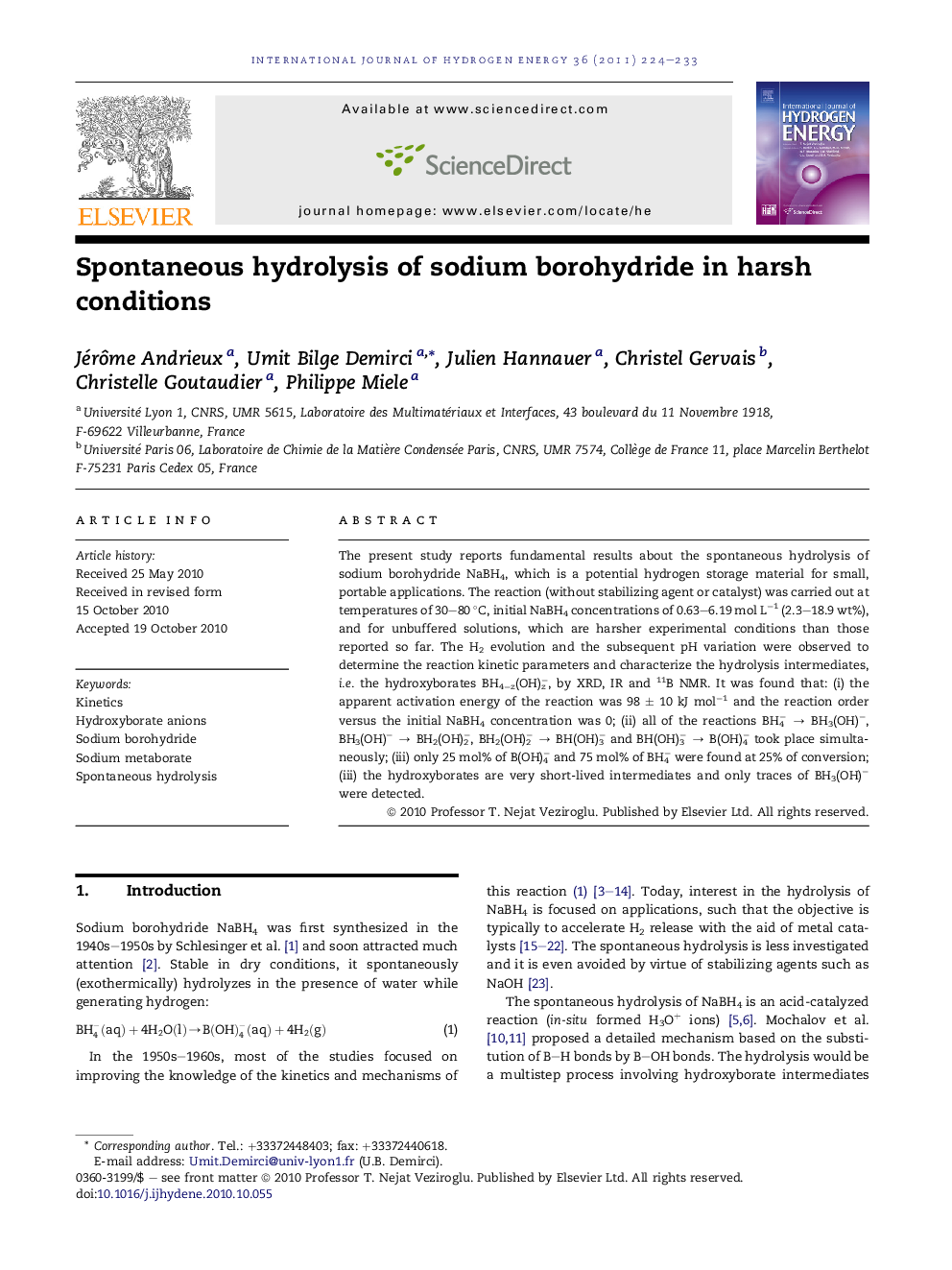| Article ID | Journal | Published Year | Pages | File Type |
|---|---|---|---|---|
| 1277769 | International Journal of Hydrogen Energy | 2011 | 10 Pages |
The present study reports fundamental results about the spontaneous hydrolysis of sodium borohydride NaBH4, which is a potential hydrogen storage material for small, portable applications. The reaction (without stabilizing agent or catalyst) was carried out at temperatures of 30–80 °C, initial NaBH4 concentrations of 0.63–6.19 mol L−1 (2.3–18.9 wt%), and for unbuffered solutions, which are harsher experimental conditions than those reported so far. The H2 evolution and the subsequent pH variation were observed to determine the reaction kinetic parameters and characterize the hydrolysis intermediates, i.e. the hydroxyborates BH4−z(OH)z−, by XRD, IR and 11B NMR. It was found that: (i) the apparent activation energy of the reaction was 98 ± 10 kJ mol−1 and the reaction order versus the initial NaBH4 concentration was 0; (ii) all of the reactions BH4− → BH3(OH)−, BH3(OH)− → BH2(OH)2−, BH2(OH)2− → BH(OH)3− and BH(OH)3− → B(OH)4− took place simultaneously; (iii) only 25 mol% of B(OH)4− and 75 mol% of BH4− were found at 25% of conversion; (iii) the hydroxyborates are very short-lived intermediates and only traces of BH3(OH)− were detected.
Research highlights► The spontaneous hydrolysis of sodium borohydride NaBH4, which is a potential hydrogen storage material for small, portable applications, was carried out under harsher experimental conditions than those reported so far. ► The apparent activation energy of the reaction was 98 ± 10 kJ mol−1 and the reaction order versus the initial NaBH4 concentration was 0. ► The reactions BH4− → BH3(OH)−, BH3(OH)− → BH2(OH)2−, BH2(OH)2− → BH(OH)3− and BH(OH)3− → B(OH)4− took place simultaneously. ► The hydroxyborates are very short-lived intermediates and only traces of BH3(OH)− were detected
